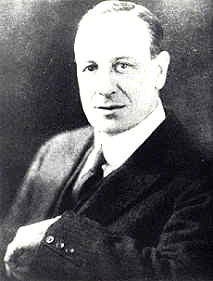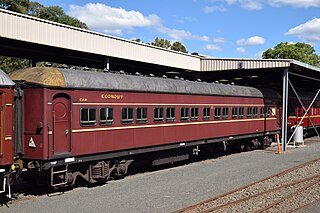
The 4073 or Castle Class are 4-6-0 steam locomotives of the Great Western Railway, built between 1923 and 1950. They were designed by the railway's Chief Mechanical Engineer, Charles Collett, for working the company's express passenger trains. They could reach speeds of up to 100 mph (160 km/h).

Didcot Railway Centre is a railway museum and preservation engineering site in Didcot, Oxfordshire, England. The site was formerly a Great Western Railway engine shed and locomotive stabling point.

Tyseley Locomotive Works, formerly the Birmingham Railway Museum, is the engineering arm of steam railtour promoter Vintage Trains based in Birmingham, England. It occupies part of the former Great Western Railway's Tyseley depot, built in 1908 to accommodate expanding operations in the West Midlands, particularly the opening of the North Warwickshire Line as a new main line from Birmingham to Bristol.

The first Locomotives of the Great Western Railway (GWR) were specified by Isambard Kingdom Brunel but Daniel Gooch was soon appointed as the railway's Locomotive Superintendent. He designed several different 7 ft 1⁄4 in broad gauge types for the growing railway, such as the Firefly and later Iron Duke Class 2-2-2s. In 1864 Gooch was succeeded by Joseph Armstrong who brought his standard gauge experience to the workshops at Swindon. To replace some of the earlier locomotives, he put broad gauge wheels on his standard gauge locomotives and from this time on all locomotives were given numbers, including the broad gauge ones that had previously carried just names.

5051 Drysllwyn Castle is a Great Western Railway (GWR) Castle Class locomotive built at Swindon Works in May 1936 and named after Dryslwyn Castle. It is owned by the Didcot Railway Centre.

The London and North Eastern Railway Gresley Classes A1 and A3 locomotives represented two distinct stages in the history of the British 4-6-2 "Pacific" steam locomotives designed by Nigel Gresley. They were designed for main line passenger services and later express passenger services, initially on the Great Northern Railway (GNR), a constituent company of the London and North Eastern Railway after the amalgamation of 1923, for which they became a standard design. The change in class designation to A3 reflected the fitting to the same chassis of a higher pressure boiler with a greater superheating surface and a small reduction in cylinder diameter, leading to an increase in locomotive weight. Eventually all of the A1 locomotives were rebuilt, most to A3 specifications, but no. 4470 was completely rebuilt as Class A1/1.

Great Western Railway (GWR) 6000 Class 6023 King Edward II is a preserved steam locomotive.

Charles Benjamin Collett was Chief Mechanical Engineer of the Great Western Railway from 1922 to 1941. He designed the GWR's 4-6-0 Castle and King Class express passenger locomotives.

The Great Western Railway (GWR) 4700 Class was a class of nine 2-8-0 steam locomotives, designed by George Jackson Churchward. They were introduced in 1919 for heavy mixed-traffic work. Although primarily designed for fast freight, the class also sometimes hauled passenger trains, notably heavy holiday expresses in the summer months. They were unofficially nicknamed "Night Owls" because they were primarily designed to haul goods during the night and they could be seen simmering in the daylight, awaiting their nocturnal duties.

GWR 4073 Class 5029 Nunney Castle is a Great Western Railway Castle Class steam locomotive. It was built at the GWR's Swindon Works in 1934, being outshopped on 28 May and taking the name of Nunney Castle near Frome, Somerset. The locomotive was used in many publicity and "life on the railway" type of photographs. During the first day of the evacuation of civilians during World War II, the locomotive hauled trains carrying children being taken from London to the safety of the countryside. Nunney Castle was also used to haul the Royal Train in October 1957 from London Paddington station to Gloucester.

The GWR 4073 Class 5043 Earl of Mount Edgcumbe is a steam locomotive of the GWR 'Castle' Class, built in March 1936. It was originally named Barbury Castle, and was renamed Earl of Mount Edgcumbe in September 1937. It had a double chimney and 4 row superheater fitted in October 1958.

GWR 4073 Class No. 7029 Clun Castle is a 4-6-0 steam locomotive built at Swindon Works in May 1950 to a design by Charles Collett for operation on the Western Region of British Railways. It was named after Clun Castle in Shropshire.

7027 Thornbury Castle was built in August 1949. Its first shed allocation was Plymouth Laira. Its March 1959 shed allocation was Old Oak Common. Its last shed allocation was Reading. It was withdrawn in December 1963 and arrived at Woodham Brothers scrapyard in Barry, South Wales in May 1964. The locomotive was not scrapped and was being restored in 2022.

Caerphilly Castle is a member of the GWR 4073 Class built in August 1923.

Sir William Hepburn McAlpine, 6th Baronet, was a British businessman who was director of the construction company Sir Robert McAlpine.

The Hamersley & Robe River railway, majority-owned by Rio Tinto, and operated by its subsidiary Pilbara Iron, is a private rail network in the Pilbara region of Western Australia for the purpose of carrying iron ore. The network is larger than any other Australian heavy freight rail network in private ownership. The total length of its track is about 1,700 km (1,056 mi).

The S type carriage stock was a type of steel passenger carriage operated by the New South Wales Government Railways from 1935 until 1989.
The Railways in the Pilbara are a collection of railways in the Pilbara region of north-west Western Australia.




















